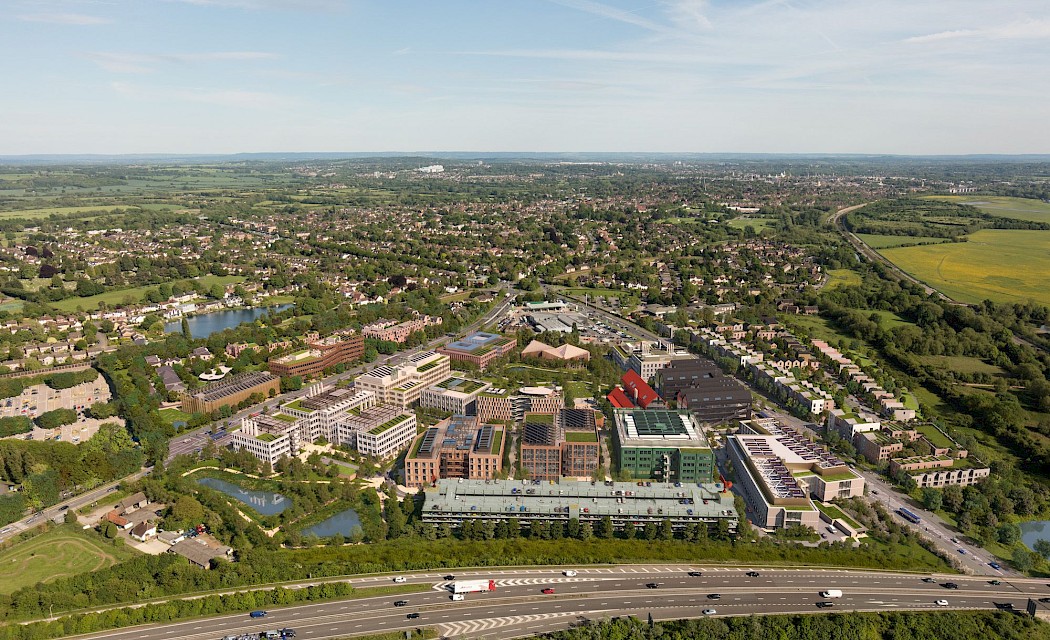The recent launch of Oxford North, a new global innovation district, has highlighted the region’s pre-eminent position as a scientific and technology hub, as well as its ability to provide attractive places to work, live and learn.
It’s an exciting time for Oxfordshire as it seeks to capture the opportunities for AI, quantum computing, and biotech to support the growth of the region’s life science, technology and innovation industries. The million-square-foot Oxford North offers lab, co-working and office space for the whole business spectrum, from start-ups and spinouts through to international companies. Well-placed both for cycle access to the city and road and rail networks, the development includes public space in the form of a two-acre park featuring sculptures by world-renowned Icelandic-Danish artist Olafur Eliasson.
The launch was an opportunity to reiterate Oxford’s contribution, described by Lord Hague of Richmond, Chancellor, University of Oxford as ‘an exceptional 900-year history synonymous with life-changing scientific and technological breakthroughs.’
It also came shortly before the news that Oxford University has been named world number one in the Times Higher Education World University Rankings for a record 10th year. This is longest time any university has held the position in the 21 annual editions of the rankings, which rates 2,191 universities from 115 countries. The University of Oxford has produced the most unicorn founders in Europe, and has the highest share of any UK university of capital raised by spinouts at 30%, amounting to £5.7 billion.
Oxford’s status as a pioneering ecosystem has been confirmed by other recent tables. In the latest Global Innovation Index, Oxford was named as standing out for its high scientific productivity and was placed fifth in the world for innovation intensity, which is measured as the combined global share of patents, scientific publications, and VC deals, normalised by population.[1]
International investment into the region is continuing, with the recent UK-US trade deal benefiting Oxfordshire company Oxa, and the announcement of £118 million in research funding by the Ellison Institute of Technology (EIT). Another UK-US deal on energy security, will boost collaboration on clean energy by fast-tracking fusion power with AI-driven innovation spearheaded by the UK Atomic Energy Authority (UKAEA) at Culham Campus. Another recent agreement, between UKAEA and Ontario Power Generation (OPG), securing future tritium supply, has strengthened Culham’s role at the centre of the global fusion community.
Oxford’s research-driven economy has also led it to be named as one of the top three centres for mid-market business growth. Mid-market companies, turning over between £25 million and £500 million annually, account for 30% of UK economic Gross Value Added.[2]
With VC investment into UK life science companies expected to exceed £3.7 billion this year, the highest amount since 2021, Oxford North and other developments in the region will help to address the demand for laboratory space in the UK.
[1] Global Innovation Index, a report by World Intellectual Property Organization (WIPO), 18th edition https://www.wipo.int/web-publications/global-innovation-index-2025/assets/80937/global-innovation-index-2025-en.pdf
[2] https://www.natwestgroup.com/news-and-insights/news-room/press-releases/enterprise/2025/oct/uks-business-hotspots-revealed.html
